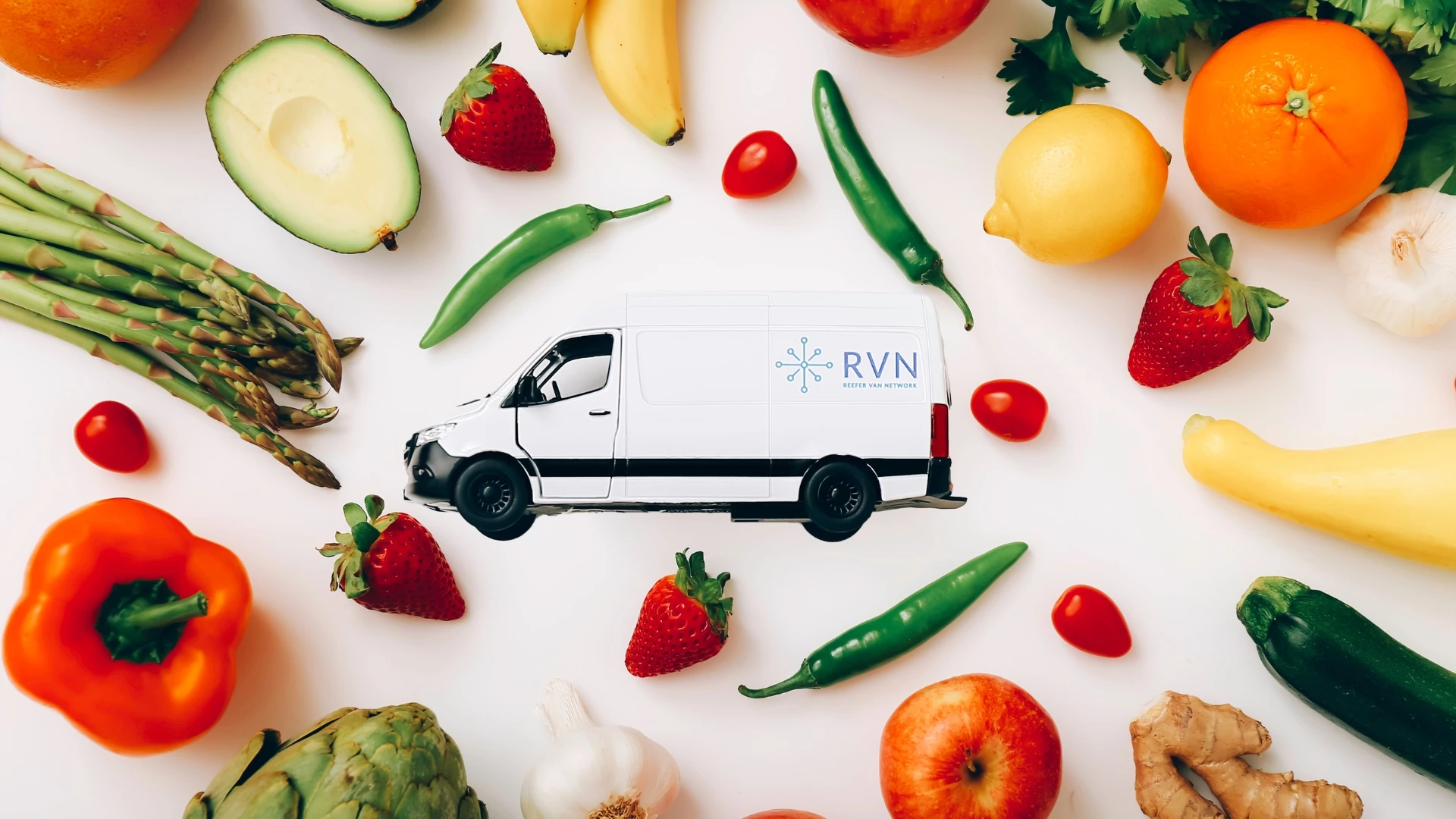
The Secrets of Efficient Cold-Chain Delivery
Frozen products comprise a substantial share of the global food trade, with an estimated annual value exceeding $250 billion. With such an extreme demand, businesses face constant pressure to ensure product quality while maintaining efficient delivery.
But how can you ship frozen food without compromising its integrity? Or, more specifically, how can you ship frozen food safely across long distances? Questions like these highlight the critical role of advanced cold-chain logistics in meeting consumer expectations for freshness and safety.
The Importance of Cold-Chain Logistics
Shipping frozen food would only be possible with efficient cold-chain logistics. This method ensures frozen goods remain within a specific temperature range throughout transportation, maintaining product quality, extending shelf life, and meeting stringent safety regulations.
Preserving the safety of frozen goods is all about proper temperature control. Even slight temperature fluctuations can cause spoilage, compromise food safety, or lead to textural changes. Industry-specific examples demonstrate how cold-chain logistics make a difference. Seafood, a highly perishable product, relies on rapid freezing and efficient transportation to retain its freshness. Frozen meats, often shipped over long distances, depend on specialized reefer trucks and proper packaging to avoid contamination. Ice cream shipments use advanced insulation and dry ice to maintain ultra-low temperatures.
Challenges in Shipping Frozen Food
Shipping frozen food comes with unique challenges that demand precise planning and execution.
Temperature Maintenance
Maintaining a consistent temperature is one of the most critical aspects of shipping frozen goods. Even brief temperature fluctuations can lead to spoilage or bacterial growth. For example, if seafood warms up during transit, it can become unsafe for consumption, rendering the shipment worthless. Improperly calibrated reefer trucks or delays during loading and unloading are common causes of temperature inconsistencies.
Packaging
Inadequate insulation or the wrong type of cooling agent, like insufficient dry ice, can result in thawing. For instance, a poorly packaged shipment of frozen meat may arrive at its destination partially defrosted, leading to safety concerns and financial losses for the shipper.
Transit Times
Balancing speed and cost is a common dilemma. While expedited shipping ensures that products reach their destination quickly, it can be expensive. Conversely, opting for slower transit methods increases the risk of temperature variations and spoilage. An example is frozen vegetables transported via economy shipping; delays or prolonged transit in subpar conditions can lead to loss of texture and flavor.
Consequences of Mishaps
If cold-chain requirements aren’t met, the results can be devastating. Spoiled shipments lead to monetary losses and damage brand reputation.
About Efficient Food Delivery
Efficiently shipping frozen food is a combination of specialized equipment, strategic planning, and reliable partnerships.
Use of Specialized Equipment
Reefer trucks, equipped with advanced temperature controls, are indispensable for maintaining consistent conditions throughout transit. Insulated containers provide additional protection, especially for smaller shipments or last-mile delivery. Some logistics providers now also use smart temperature monitoring systems to alert operators of any fluctuations.
Proper Packaging
High-quality materials, such as thermal blankets and gel packs, help shield frozen products from external heat. Dry ice, a popular cooling agent, is particularly effective for maintaining ultra-low temperatures during transport.
Route Planning
Real-time tracking systems and AI-powered route planning tools help identify the fastest and most reliable delivery paths. They enable businesses to avoid delays caused by traffic, weather, or other disruptions.
Collaboration with Reliable Logistics Providers
Reliable providers bring expertise, a proven track record, and access to specialized equipment. They also handle compliance with cold-chain regulations, reducing the burden on shippers. Efficient logistics providers safeguard shipments and build trust with customers.

Technologies in Cold-Chain Logistics
Technological advances are transforming cold-chain logistics, making it more efficient and reliable than ever before.
Smart Sensors for Real-Time Temperature Monitoring
Smart sensors enable continuous tracking of temperature conditions during transit. These devices provide real-time alerts, allowing logistics teams to address issues immediately and prevent spoilage.
AI-Driven Predictive Maintenance
Artificial intelligence is revolutionizing maintenance for refrigerated units. Predictive maintenance tools analyze data from reefer systems to identify potential issues before they escalate, reducing downtime and preventing costly repairs.
Blockchain for End-to-End Visibility
Blockchain technology is enhancing transparency and accountability in cold-chain logistics. It provides shippers and receivers with a detailed history of temperature conditions and handling processes by recording each step of the journey on an immutable ledger.
Simple Tips to Streamline Your Frozen Goods Logistics
Sometimes, small details can make a big difference. Consider the following tips to ensure product quality and customer satisfaction.
Vet Logistics Partners Carefully
The right logistics make any shipping process seamless. Look for partners with experience in cold-chain logistics, a proven track record, and access to specialized equipment like reefer trucks and temperature-monitoring technology.
Monitor Temperature as Long as Your Products in Transit
Real-time temperature monitoring allows you to avoid potential problems and save a lot of headaches. Use smart sensors to track conditions and respond promptly to any fluctuations.
Plan for Contingencies
Unexpected delays or equipment failures can disrupt even the best-laid plans. Containment measures, such as backup cooling systems or alternative transportation options, can help mitigate these risks and prevent product loss.
Final Thoughts
Shipping frozen food requires precision, preparation, and the right tools. Altogether, these allow shippers and carriers to address challenges like temperature maintenance or poor packaging. Innovations such as smart sensors, AI-driven maintenance, and blockchain further enhance operations and streamline cold chains.
Partnering with experienced logistics providers is no less important. They have the knowledge and experience needed to confidently handle complex logistics processes.
If you’re looking for a reliable and trusted logistics partner, Reefer Van Network is your best choice. Contact us today to learn more about tailored cold-chain solutions that keep your business on the path to success.
Back to blogYou may also be interested in

Solving the Refrigerated Freight Bottleneck: A Customer’s Guide to Reefer Expedite
The refrigerated freight is one of the most demanding segments of logistics. Unlike dry freight, temperature-sensitive goods don’t get second chances. If a load arrives late or the temperature drifts outside compliance ranges, the shipment can lose its entire value. For customers, that means one mistake can turn into thousands of dollars in losses and […]

Airport Delays and Temperature Risk: How Forwarders Mitigate the Gap
Airports are the heartbeat of global trade, connecting perishable goods to every corner of the world. But for refrigerated freight, airports are also one of the riskiest points in the journey. Unlike long-haul reefer trucking, where temperature can be monitored and maintained throughout, airports introduce multiple variables, such as customs clearance, handling procedures, flight schedules, […]
